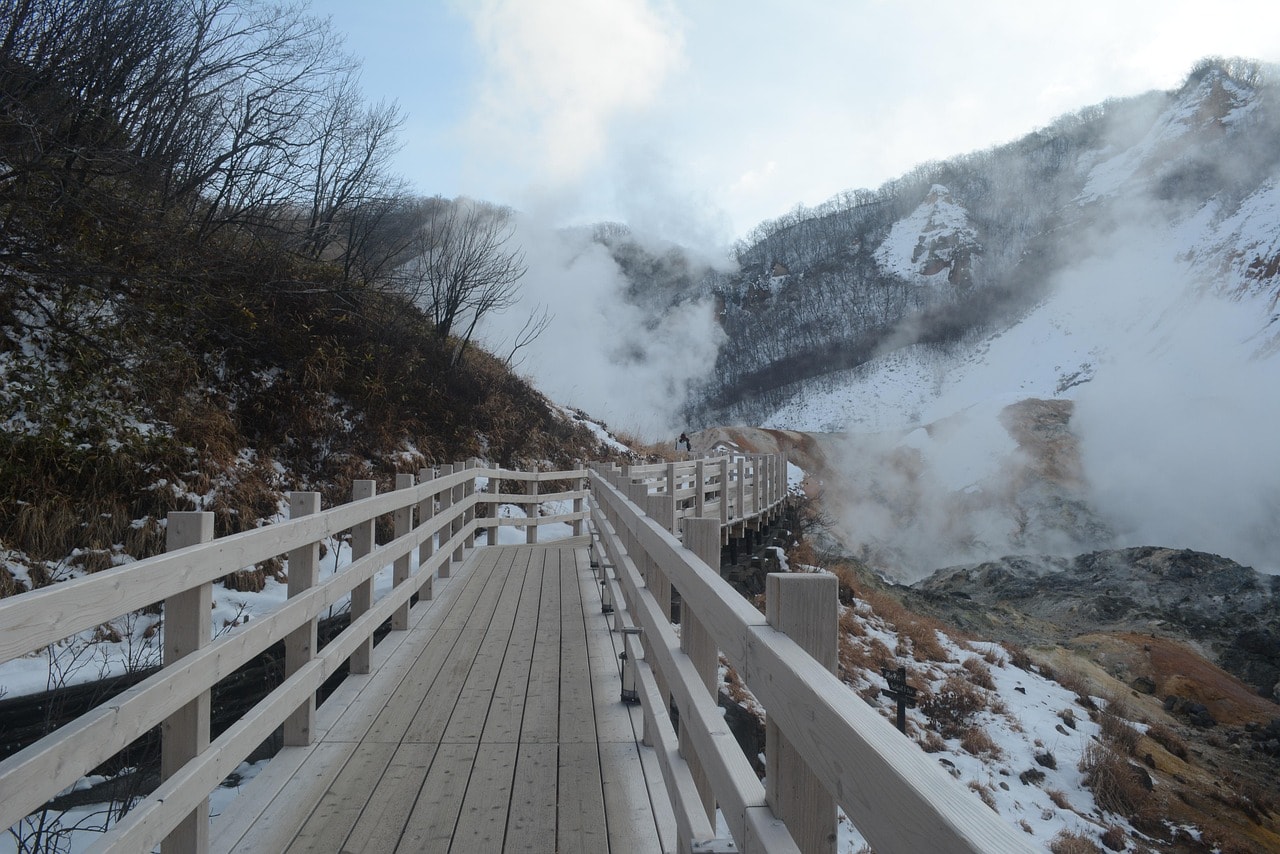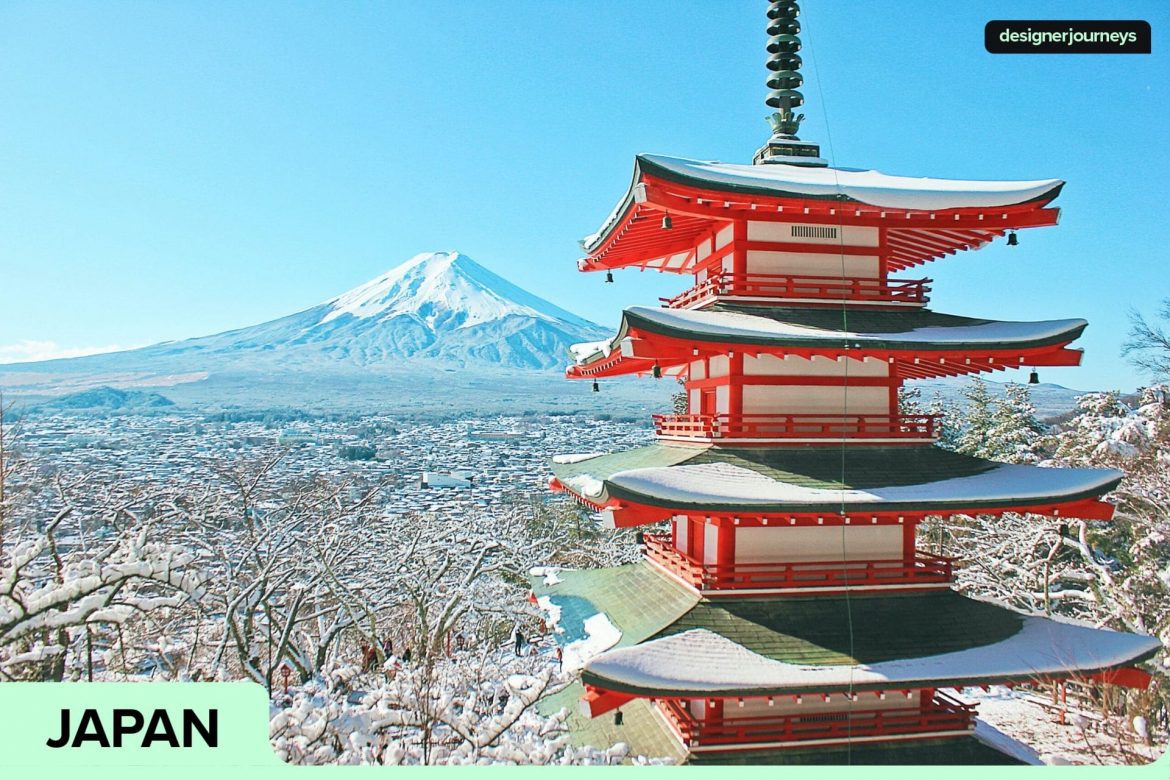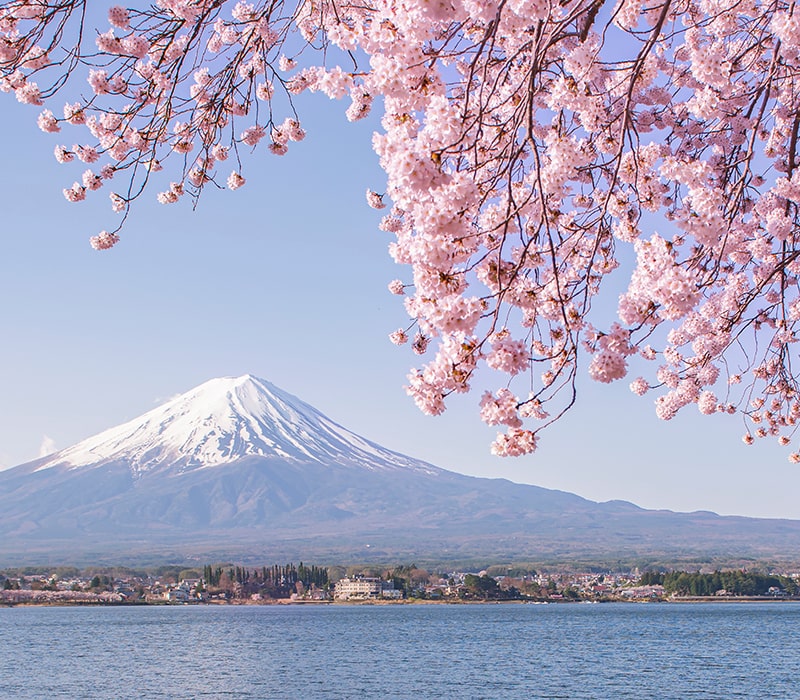Japan is a country that consistently captivates visitors with its rich cultural heritage, stunning natural beauty, and futuristic cities. In January, the country transforms into a winter wonderland, offering a unique and unforgettable experience to those who venture out into its icy landscapes. Whether you’re a history buff, a nature lover, or a culture aficionado, Japan has something to offer everyone. From the bustling streets of Tokyo to the tranquil onsen towns, the country is a sensory feast for the eyes and the soul.
Imagine the traditional New Year celebrations and marvel at the stunning shrines and temples blanketed in snow. Take a dip in a hot onsen, savour the taste of steaming bowls of ramen, and admire the views from the top of a mountain. With so much to see and do, it can be challenging to know where to start. But fear not, in this article, we will guide you through some of the must-visit destinations and experiences in Japan during January. Get ready for an adventure of a lifetime in one of the world’s most unique and fascinating countries with Designer Journeys!
Post Contents
The Winter Climate: What to Expect
January firmly establishes itself as one of the coldest months across Japan, with temperatures varying significantly depending on your geographical location within the country.
Northern Regions and Hokkaido
The northern island of Hokkaido embraces winter with temperatures typically ranging from -8°C to -1°C. Heavy snowfall creates the perfect environment for winter sports enthusiasts, with some areas receiving several metres of pristine powder. This snowy backdrop transforms Hokkaido into a genuine winter paradise that rivals the finest Alpine destinations in Europe.

Hokkaido is home to several national parks that showcase its natural beauty.
Are you planning a trip to Japan?
Browse our gallery of fully customisable Japan itineraries and connect with one of our expert Local Designers to get you started! Designer Journeys can design your ultimate experience and offers hand-crafted itineraries built by experienced Local Designers who have first-hand knowledge of the destination.
Tokyo and Central Japan
In Tokyo and other urban areas on mainland Japan, winter presents a milder face with temperatures hovering between 2°C and 10°C. While snowfall isn’t as consistent as in the northern regions, the occasional dusting of snow adds a special charm to the city’s modern landscape. The cool, crisp air offers a refreshing change from the humidity that characterises other seasons.

Tokyo experiences rain throughout the year, and images of the city in wet conditions are common.
Southern Regions
Even the traditionally warmer southern prefectures experience a distinct winter chill, albeit a gentler one. With temperatures ranging from 5°C to 13°C, these areas provide a comfortable escape for those seeking to avoid extreme cold whilst still enjoying the unique atmosphere of Japanese winter.

Known for its preserved traditional wooden machiya houses and narrow streets leading to Kiyomizu-dera Temple.
Cultural Celebrations and Festivals
January in Japan isn’t merely about weather conditions—it’s a month rich with cultural significance and traditional celebrations that offer visitors a glimpse into authentic Japanese customs.
New Year (Shōgatsu) Celebrations
The first few days of January continue the New Year celebrations that began on December 31st. This period, known as “Shōgatsu,” represents the most important holiday in the Japanese calendar and is quintessentially a family affair. During this time, families gather to visit temples and shrines for “hatsumōde,” the first shrine visit of the year, where they pray for good fortune in the months ahead.

The atmosphere is generally one of joy, hope, and renewal.
Major shrines and temples across the country welcome thousands of visitors, creating a festive atmosphere with food stalls, traditional performances, and ceremonial rituals. The Meiji Shrine in Tokyo and Fushimi Inari Shrine in Kyoto are particularly spectacular during this period, with queues of visitors patiently waiting to make their first prayers of the year.
Coming of Age Day (Seijin no Hi)
On the second Monday of January, Japan celebrates Coming of Age Day, honouring all who have turned 20 during the previous year. This national holiday features young women dressed in elaborate furisode (long-sleeved kimonos) and young men in formal hakama or Western-style suits, gathering for ceremonies at local government offices.

It is a significant milestone marking the transition to adulthood.
For visitors, this presents a remarkable photo opportunity and cultural experience as cities fill with colourful lights and ceremony. The contrast of traditional attire against either modern urban landscapes or historic temples creates a visual feast that embodies Japan’s blend of ancient traditions and contemporary life.
Dondo Yaki (Burning of New Year Decorations)
Around mid-January, communities across Japan participate in “Dondo Yaki,” a traditional ceremony where New Year decorations are burned in a controlled bonfire. This ritual, believed to send the spirits of the decorations back to the gods, creates a communal atmosphere as locals gather around fires often held on shrine or temple grounds.

The decorations are often piled high in a tall structure made of bamboo and straw.
Top Destinations for a January Visit
Hokkaido: The Winter Sports Paradise
Hokkaido stands as Japan’s premier winter destination, offering world-class skiing and snowboarding across numerous resorts:
Niseko: Internationally renowned for its consistent powder snow, Niseko attracts winter sports enthusiasts from around the globe. Beyond the slopes, the area boasts exceptional onsen (hot springs) and dining options specialising in Hokkaido’s famous seafood and dairy products.

The area is also known for its agriculture, producing high-quality dairy products and vegetables.
Sapporo: The capital city of Hokkaido hosts the famous Sapporo Snow Festival in early February, but January visitors can enjoy the city’s winter charm without the festival crowds. The city’s Odori Park transforms into a winter playground, while the nearby Teine Ski Resort offers excellent skiing just minutes from the city centre.

The city features a mix of modern buildings and older structures.
Lake Akan: For a unique winter experience, visit Lake Akan to witness the mesmerising “frost flowers” that form on the frozen lake surface. The area also hosts ice fishing experiences and serves as home to the indigenous Ainu culture, which can be explored at the lakeside Ainu Kotan village.

A prominent active volcano that overlooks the lake, often with a snow-capped peak.
Design your perfect Japan trip today!
Work with your expert local travel designer to customise your itinerary so it is exactly what you want from a Japan trip. Get exclusive experiences, top-rated restaurants, and hotels that fit your interests.
The Japanese Alps: Snow Monsters and Historic Villages
Zao Onsen (Yamagata Prefecture): This hot spring resort becomes famous in January for its “snow monsters” (juhyo)—trees coated in wind-shaped snow and ice that create otherworldly silhouettes. Night illuminations add an extra dimension to this natural phenomenon.

Besides skiing and snowboarding, visitors can also enjoy viewing the illuminated snow monsters at night.
Shirakawa-go: This UNESCO World Heritage Site in Gifu Prefecture showcases traditional gassho-zukuri farmhouses with steep thatched roofs designed to withstand heavy snowfall. The village illumination events, held several times in January, transform this historic site into an enchanting winter postcard scene.

Shirakawa-go is a traditional village located in the remote mountains of Gifu Prefecture, Japan.
Nagano Prefecture: Home to the 1998 Winter Olympics, Nagano offers excellent skiing at resorts like Hakuba and Shiga Kogen. The prefecture is also famous for its snow monkeys (Japanese macaques) that bathe in natural hot springs at Jigokudani Monkey Park—a sight particularly magical against the January snow.

Kamikochi is a popular destination for hiking and enjoying nature, with well-maintained trails.
Urban Experiences: Tokyo and Kyoto in Winter
Tokyo: The capital city takes on a different character in January. With fewer tourists, visitors can enjoy popular attractions like the Senso-ji Temple or the Tokyo Skytree without the usual crowds. Department stores host elaborate January sales, while illuminations and winter-themed installations continue from the December holiday season into early January.

Nighttime is a prime time for shopping and dining in Tokyo.
Kyoto: Perhaps Japan’s most photogenic city becomes even more captivating when dusted with snow. The golden pavilion (Kinkaku-ji) reflected in its pond against a snowy backdrop ranks among Japan’s most iconic winter images. January visitors benefit from significantly smaller crowds at popular temples like Kiyomizu-dera and Fushimi Inari Shrine.

Nighttime street in Kyoto.
Relaxation and Warmth: Onsen Culture
No winter visit to Japan would be complete without experiencing the country’s onsen (hot spring) culture. January’s cold temperatures make these natural thermal baths particularly appealing:
Kusatsu Onsen (Gunma Prefecture): One of Japan’s most famous hot spring towns, Kusatsu features a central “yubatake” (hot water field) where mineral-rich waters cool before flowing to various bathhouses throughout the town.

The water is highly acidic and rich in minerals, known for its therapeutic properties.
Ginzan Onsen (Yamagata Prefecture): This charming hot spring town with traditional ryokan lining a river creates a nostalgic atmosphere reminiscent of the Taisho era. When covered in snow and illuminated by gas lamps at night, it presents one of Japan’s most romantic winter scenes.

The town has a magical and nostalgic atmosphere, especially when illuminated at night.
Kinosaki Onsen (Hyogo Prefecture): This picturesque onsen town encourages visitors to participate in the traditional practice of “onsen-hopping” between seven public baths while wearing yukata (light cotton kimono) and geta (wooden sandals) along the willow-lined canal.

The main railway station serving the town, providing access for tourists and residents.
Culinary Delights of Winter
January brings its own seasonal specialities to Japanese cuisine:
Nabe (Hot Pot): Various styles of hot pot dishes become staples during winter, from the shabu-shabu (thinly sliced meat swished in broth) to chanko nabe (the hearty stew associated with sumo wrestlers).

The broth can vary greatly, from simple dashi to more complex flavors with soy sauce, miso, or other seasonings.
Oden: This simmered dish of various ingredients in a light dashi broth is a winter comfort food often found at convenience stores and street stalls.

It is often eaten communally, with diners picking out their favorite ingredients from the simmering pot.
Sake: Winter is traditionally considered the best season for sake, with new brews released and sake-related events held throughout the country.

Sake is an alcoholic beverage made by fermenting rice that has been polished to remove the bran.
Hot Amazake: This sweet, low-alcohol or non-alcoholic drink made from fermented rice becomes particularly popular during winter festivals and shrine visits.

Amazake: The Rich History of Sweet Rice Wine.
Practical Travel Tips for January in Japan
Packing Essentials
-
Layered clothing is essential, as temperature differences between outdoors and heated indoor spaces can be significant.
-
Thermal undergarments for northern destinations.
-
Waterproof footwear with good grip for navigating snowy or icy conditions.
-
Portable hand warmers (kairo), which can be purchased locally.
-
Moisturiser and lip balm to combat dry winter air.
Transportation Considerations
-
While Japan’s transport system remains remarkably efficient year-round, heavy snowfall can occasionally cause delays, particularly in rural areas and mountain passes.
-
The Japan Rail Pass offers excellent value for travellers planning to visit multiple regions.
-
Consider booking train tickets in advance, especially if your trip coincides with the beginning or end of the New Year holiday period, when locals travel extensively.
Planning Your Itinerary
-
Many businesses close during the first few days of January for the New Year holidays, so research opening hours carefully.
-
Ski resorts and popular winter destinations can be busy on weekends—weekday visits allow for a more relaxed experience.
-
Balance indoor and outdoor activities, with museums, traditional craft experiences, and culinary activities providing warm alternatives on particularly cold days.
Don’t Miss Our Exclusive Offers! Subscribe Today!
For the ultimate travel inspiration, local insight straight from our expert Local Designers and exclusive offers you won’t find anywhere else from Designer Journeys, sign up today! Don’t miss out.
January reveals a side of Japan that summer tourists seldom experience—a time when ancient traditions emerge against the backdrop of serene winter landscapes. From the steam rising off outdoor onsen baths to the solemn atmosphere of a snow-covered temple, visiting Japan during the winter season offers moments of tranquillity and cultural authenticity that contrast sharply with the country’s more touristed seasons.
For those who are willing to embrace the cooler temperatures, a winter holiday in Japan presents an opportunity to witness the country at perhaps its most genuine, when locals engage in centuries-old traditions and the natural beauty of the country takes on a quiet, contemplative quality. The combination of rich Japanese culture, family-oriented winter festivities, exceptional winter sports (particularly in winter Hokkaido), and relative tranquillity makes January a surprisingly ideal month for a family affair that discovers the many faces of Japan.
Visit Japan in the other months? Explore our Japan travel guide for an unforgettable journey.





